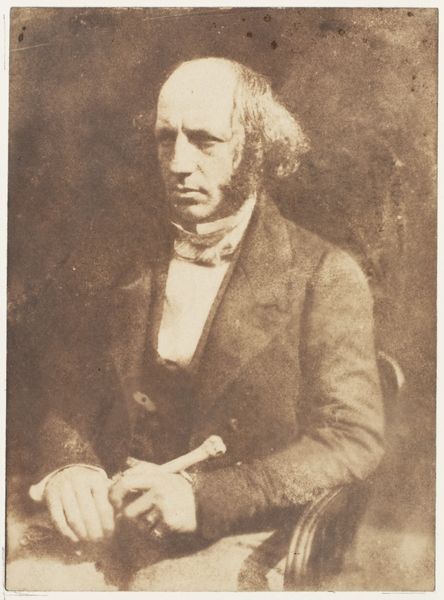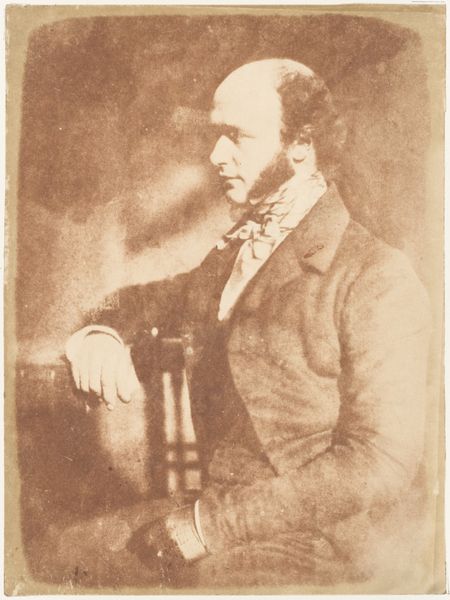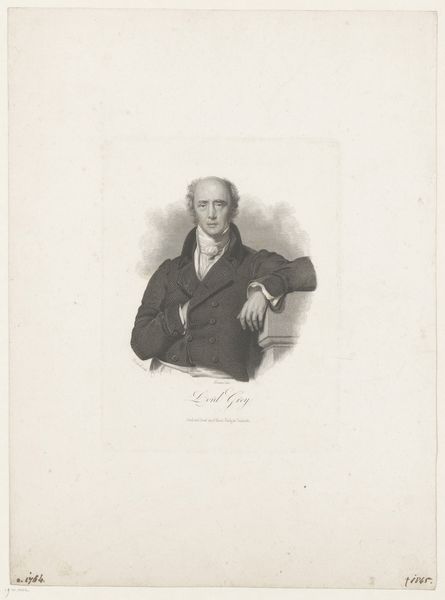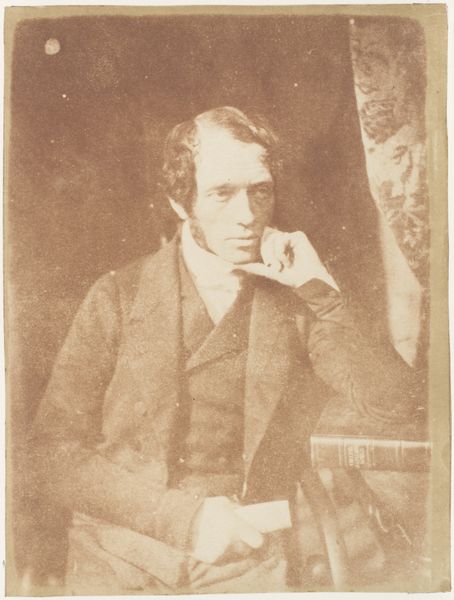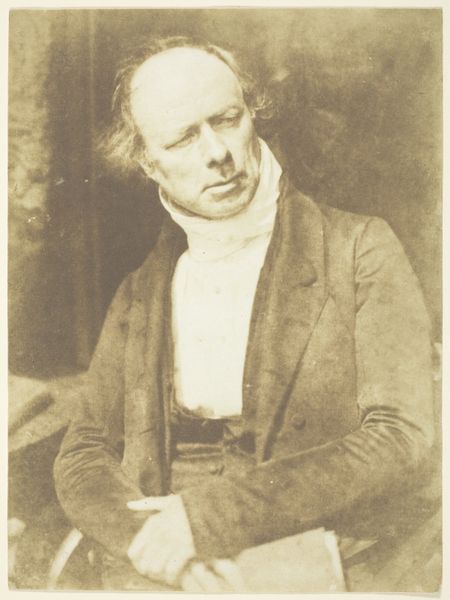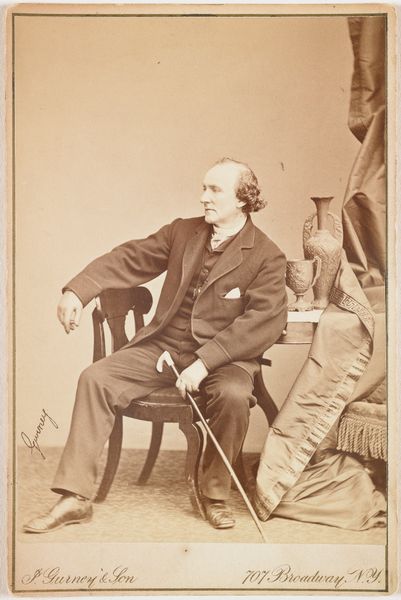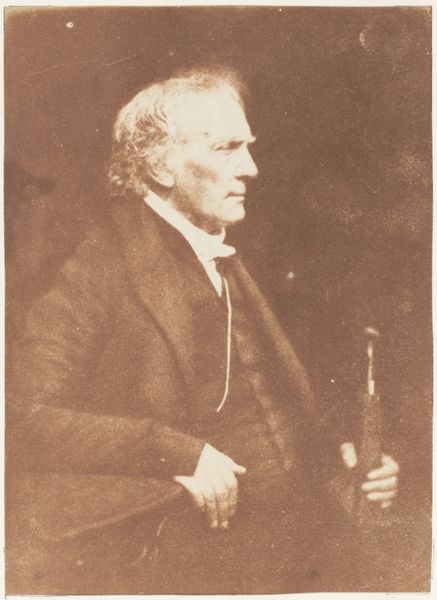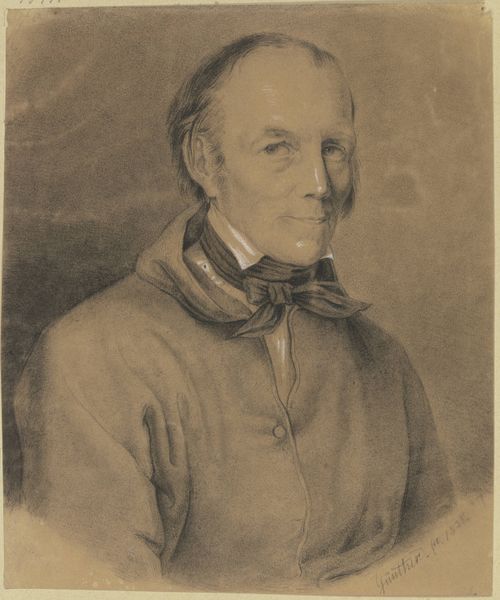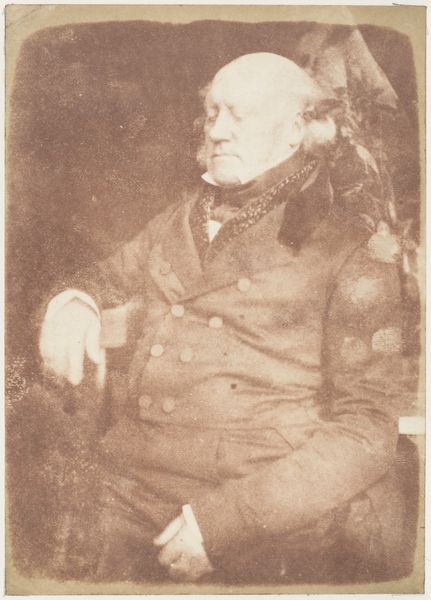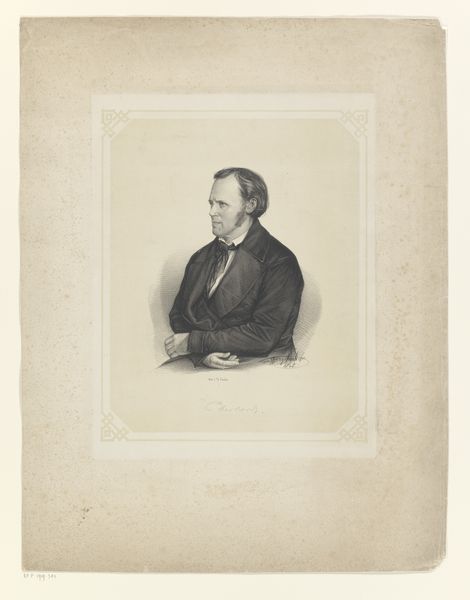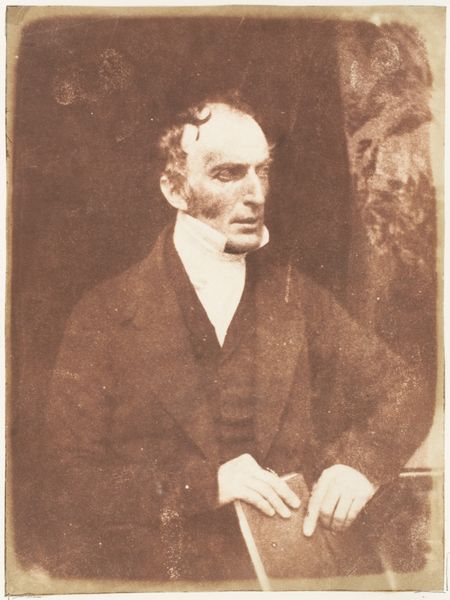
daguerreotype, photography, gelatin-silver-print, albumen-print
#
portrait
#
daguerreotype
#
photography
#
romanticism
#
gelatin-silver-print
#
albumen-print
Copyright: Public Domain
Editor: Here we have "James Aytoun," a daguerreotype from Hill and Adamson, made sometime between 1843 and 1847. The sepia tones create such a pensive atmosphere. What can you tell me about it? Curator: From a formalist perspective, notice how the light etches Aytoun's features, emphasizing the textures of his clothing. Consider the tonal range—the subtle gradations creating form. The composition leads the eye to his face and then is sharply interrupted by his stiff collar. What do you make of the balance between the detail of his face and the blur of the background? Editor: I suppose the contrast adds to the isolating mood. Was that on purpose, or simply the nature of early photography? Curator: Precisely! The long exposure times inherent in early daguerreotypes would soften movement in the background. It might suggest an attempt to solidify the sitter and bring that figure to permanence through the novel device of photography. But, let's examine the internal relationships. The placement of the light and dark shadows draw our eyes to a stark angular position in the collarbone, but the detail of his hands is lost by its lack of focus. How does that lack of equal emphasis strike you? Editor: It seems odd, almost like his intellect is favored over any form of action. Perhaps it emphasizes his thoughts. Curator: That is astute. Observe how the lines of his coat subtly bisect the image diagonally, and consider how those lines further direct the eye. How do you see these directional compositions working with or against each other? Editor: I never thought of analyzing photography that way! Thank you. It all provides another lens to use in appreciating a work's effect, regardless of time period. Curator: Indeed. By observing such formal properties, we come closer to understanding the aesthetic effect of the piece itself.
Comments
No comments
Be the first to comment and join the conversation on the ultimate creative platform.
